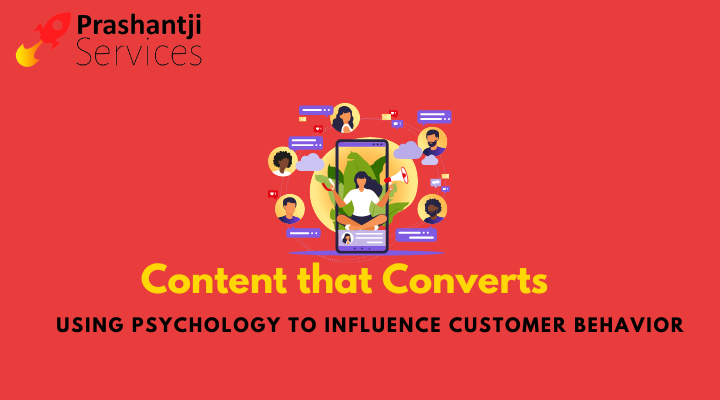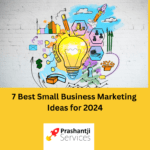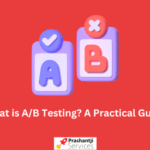Content that Converts: Using Psychology to Influence Customer Behavior
The world of marketing is constantly evolving, and with so many businesses vying for attention online, it can be tough to stand out. But what if we told you that there’s a way to tap into the psychology behind customer behavior and create content that converts? In this blog post, we’re going to explore how understanding human nature can help you craft copy that resonates with your target audience and drives conversions. From the power of social proof to the impact of scarcity, we’ll dive into some key psychological principles and show you how they can be applied in your own marketing strategy. So buckle up, because we’re about to take a deep dive into the fascinating world of consumer psychology!
Introduction to Content Marketing & Psychology
It’s no secret that content marketing is an essential piece of any digital marketing strategy. But what many marketers don’t realize is that the effectiveness of their content depends just as much on psychology as it does on the quality of the writing.
By understanding how psychology influences customer behavior, you can create content that is more likely to resonate with your audience and drive conversions. In this article, we’ll cover some of the basics of psychology and how you can use it to create content that converts.
Psychology is the study of the human mind and its effects on behavior. It’s a complex field, but there are a few key concepts that every marketer should know.
One of the most important psychological concepts for marketers is called “cognitive dissonance“.This occurs when someone holds two conflicting beliefs or ideas at the same time. For example, someone might believe that smoking is bad for their health, but they continue to smoke anyway.
Cognitive dissonance creates a lot of stress and anxiety, which can lead people to make irrational decisions – like buying something they don’t really need just to relieve the tension. As a marketer, you can use cognitive dissonance to your advantage by creating ads or content that highlight the conflict between what someone wants and what they currently have.

How Content Affects Customer Behavior
Content is one of the most important elements of any marketing campaign, as it can influence customer behavior in a number of ways. By understanding how content affects customers, businesses can create more effective campaigns that lead to better results.
One of the ways content affects customer behavior is by shaping their perceptions. The words, images, and ideas presented in a piece of content can all influence how customers see a product or service. If businesses want to change the way customers think about their offerings, they need to start with their content.
Another way content affects behavior is by influencing emotions. Positive emotions like happiness and excitement can lead to positive customer behaviors like making a purchase or becoming a loyal fan. On the other hand, negative emotions like fear and anxiety can cause customers to avoid a product or service altogether. By crafting content that evokes the right emotions, businesses can encourage customers to take the actions they want them to take. Content can also affect behavior by providing information that helps customers make decisions. Customers often base their purchasing decisions on factors like price, quality, and features. By providing clear and concise information about these things in their content, businesses can help guide customers to the products and services that are right for them. By understanding how content affects customer behavior, businesses can create more effective marketing campaigns that lead to better results.
Learn the Principles of Persuasion
In order to persuade your customers, you need to understand the principles of persuasion. These principles are based on psychological research and they can be used to influence customer behavior.
The first principle is called the principle of social proof. This principle states that people are more likely to do something if they see other people doing it. For example, if you want people to buy your product, you can show them reviews from other customers who have purchased it.
The second principle is called the principle of authority. This principle states that people are more likely to do something if they think that an authority figure is telling them to do it. For example, if you want people to buy your product, you can have a celebrity endorse it.
The third principle is called the principle of scarcity. This principle states that people are more likely to do something if they think that there is a limited supply of it. For example, if you want people to buy your product, you can tell them that there are only a limited number of units available.
By using these principles of persuasion, you can influence customer behavior and convince them to buy your product.

Crafting Compelling Copy That Converts
It’s no secret that good copywriting can be the difference between a successful marketing campaign and a total flop. But what exactly makes for compelling copy? And how can you use psychology to influence your customers’ behavior?
Here are some tips for crafting copy that converts:
1. Use strong headlines
- Your headline is the first thing people will see, so it’s important to make a strong impression. Write headlines that are clear, interesting, and make use of powerful words (like “guaranteed,” “free,” and “you”).
2. Appeal to emotion
- The best way to get people to take action is to appeal to their emotions. Write copy that stirs up positive feelings like happiness, excitement, or relief.
3. Use persuasive language
- Certain words and phrases are proven to be more persuasive than others. Words like “because” and “you” are especially effective in getting people to agree with you. Other persuasive words include: “save,” “new,” “discover,” “proven,” and “results.”
4. Be clear and concise
- People have short attention spans, so it’s important to get your point across quickly and clearly. Use simple language and short sentences for maximum impact.
5. Make use of persuasive design elements
- The way you present your copy can make a big difference to how it’s received. Use bold fonts, high-contrast colors, and plenty of white space to attract attention and emphasize key points.
By following these tips, you can craft compelling copy that will help persuade your customers to take action.
Design and Visuals that Influence Buyers
Design and visuals are important elements in any content piece meant to influence buyer behavior. The colors, layout, and images you choose can make a big difference in how your audience perceives your message – and whether or not they’re motivated to take action.
Some basic principles of design and visual psychology can help you create more effective content that converts. Here are a few things to keep in mind:
1. Use colors that convey the right message
- Different colors evoke different emotions, so it’s important to choose colors that support the overall tone of your message. For example, if you want to convey excitement or energy, use warmer hues like red or orange. If you want to communicate trustworthiness or calmness, stick with cooler tones like blue or green.
2. Pay attention to layout and whitespace
- The way you arrange your text and images can impact how easy it is for people to digest your content – and how likely they are to stick with it until the end. Breaking up your text into small paragraphs with plenty of whitespaces around them makes for a much more user-friendly experience than one large block of text. And using images sparingly can actually make them more impactful when used judiciously throughout your piece.
3. Use images that provoke an emotional response
- Humans are highly visual creatures, so incorporating relevant imagery into your content can be a powerful way to connect with your audience on an emotional level. When choosing images, look for ones that relate directly to your message and evoke the desired feeling or sentiment.
By using these design and visual principles, you can create content that’s more effective in influencing buyer behavior. Keep these tips in mind when crafting your next piece of content – and you should see a noticeable difference in how it resonates with your audience.

Utilizing Social Proof in Your Content Strategy
As humans, we are social creatures that crave connection and approval. We are constantly looking to others for cues on how to behave in any given situation. This is known as social proof and it’s a powerful tool that you can use to influence your audience’s behavior.
When used correctly, social proof can be a highly effective way to increase conversion rates and encourage your audience to take action. In this article, we’ll explore what social proof is, how it works, and some tips for using it in your content strategy.
What Is Social Proof?
Social proof is the idea that we are more likely to do something if we see others doing it. It’s a form of psychological pressure that creates a sense of urgency and encourages us to take action before we miss out.
For example, if you see a long line outside a new restaurant, you’re more likely to want to try it out yourself. Or if you see that an event is sold out, you’re more likely to buy a ticket before they run out. In both cases, the fear of missing out (FOMO) is a strong motivating factor that drives us to take action.
How Does Social Proof Work?
Social proof works because it taps into our basic need for approval and belonging. When we see others doing something, we want to do it too so that we can fit in and feel like part of the
Understanding the Power of Language to Convert
The power of language to convert is a result of its ability to trigger psychological reactions in people. The right words can cause people to experience certain emotions, which in turn can lead them to take specific actions.
For example, if you want someone to buy a product, you might use language that creates a sense of urgency or scarcity. This could cause the person to feel anxious about not being able to get the product before it runs out, leading them to make a purchase. Other words and phrases can be used to create different emotions in people. If you want someone to feel happy or excited about something, you might use language that is optimistic or positive. On the other hand, if you want someone to feel angry or frustrated, you might use language that is critical or negative.
The way you word things can also influence how persuasive your message is. For instance, research has shown that people are more likely to be persuaded by messages that contain “we” rather than “I” (e.g., “We should go for it!” vs. “I think we should go for it!”). This is because using “we” makes the message seem like it comes from a group rather than just an individual, and people are more likely to trust and be influenced by messages that come from groups. So, if you want your content to convert, pay attention to the words you use. Consider what emotions you want to trigger in your audience, and use language that is likely to create those feelings. By doing so, you can increase the chances of people taking desired actions.
Creating a Winning Content Strategy
Creating a winning content strategy is about understanding your audience and what motivates them. It’s also about creating content that appeals to their needs and interests.
To do this, you need to understand the psychology behind customer behavior. What are the triggers that influence their buying decisions? What kind of language speaks to them? What kind of images will capture their attention?
By understanding these things, you can create a content strategy that will resonant with your target audience. Here are some tips to get you started:
1. Identify Your Target Audience: Before you can create a content strategy that appeals to your target audience, you need to know who they are. Take the time to do market research and identify the demographics, psychographics, and interests of your target audience. This will help you shape the tone and type of content you create.
2. Map Out Your Content Plan: Once you know who your target audience is, it’s time to map out a plan for creating content that resonates with them. Start by identifying the key topics and ideas that matter most to your audience. Then create an editorial calendar that outlines when each piece of content will be released and how it will be promoted.
3. Create Quality Content: Quality content is essential for success in today’s digital landscape. Focus on creating engaging, informative pieces that add value and solve problems for your readers. Don’t cut corners when it comes to content creation; taking the time to craft well-written articles will pay off in the long run.
4. Promote Your Content Strategically: Once you’ve created great content, it’s time to get it out there. Consider the best channels for reaching your target audience and which ones will give you the highest ROI. Then create a promotional strategy that takes advantage of these channels.
Creating a winning content strategy is all about understanding your audience and creating engaging, informative content that resonates with them. By following these tips, you can create a content strategy that will help you reach your marketing goals.
Conclusion
Content that converts is a powerful tool for any business, and it’s easy to see why. By understanding the psychology behind customer behavior, you can create content that resonates with your target audience and drives them towards taking action. With the right approach, you can use content to make more informed decisions about how best to reach out to customers. By leveraging psychological insights into consumer behavior and creating persuasive content, you can increase conversions and grow your business exponentially.








